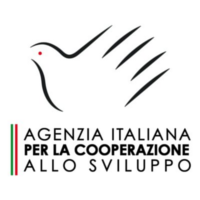In Eastern Sudan, in Gedaref State, as of the end of April 2024, the number of displaced people who have arrived from neighboring states stands at 470,000, up from the 413,000 recorded only at the end of March. This, coupled with the desperate flight of refugees from Khartoum State and the Ethiopian crisis in Tigray, complicates the sanitary conditions of the population, already put at risk by the outbreak of the cholera epidemic in September 2023 and the devastating effects of floods, which hit Sudan every year during the rainy season.
Through the project “Integrated Disaster Risk Reduction and Protection Intervention in Response to the Needs of Displaced Persons, Refugees, and Host Communities Affected by Disasters in Gedaref State” COOPI provides protection interventions and strengthens local response capacity to recurrent flooding. Thanks to the funds from AICS (Italian Agency for Development Cooperation), COOPI rehabilitated 2 child-friendly spaces in the two refugee camps of Um Raquba and Tunaydbah, and trained 40 community promoters, including 30 refugees and 10 from the host community, on good hygiene and waste management practices at the Tunaydbah refugee camp; these women then carried out awareness-raising activities in their communities.
In order to prevent the devastating effects of floods, five Community Flood Management Committees have been established, one for each village where the host community resides with the displaced, through which training activities on flood prevention and management techniques are carried out; in fact, the project aims to build prevention barriers, for which COOPI has mobilized by purchasing and delivering technical materials useful in such construction, including shovels, wheelbarrows, hoes, large baskets, rakes, axes, wooden-handled brooms, local baskets, and pumps. Finally, the intervention includes cleaning drainage channels in Tunaydbah camp, which drain water away from residential areas, thus reducing the risk of flooding.
